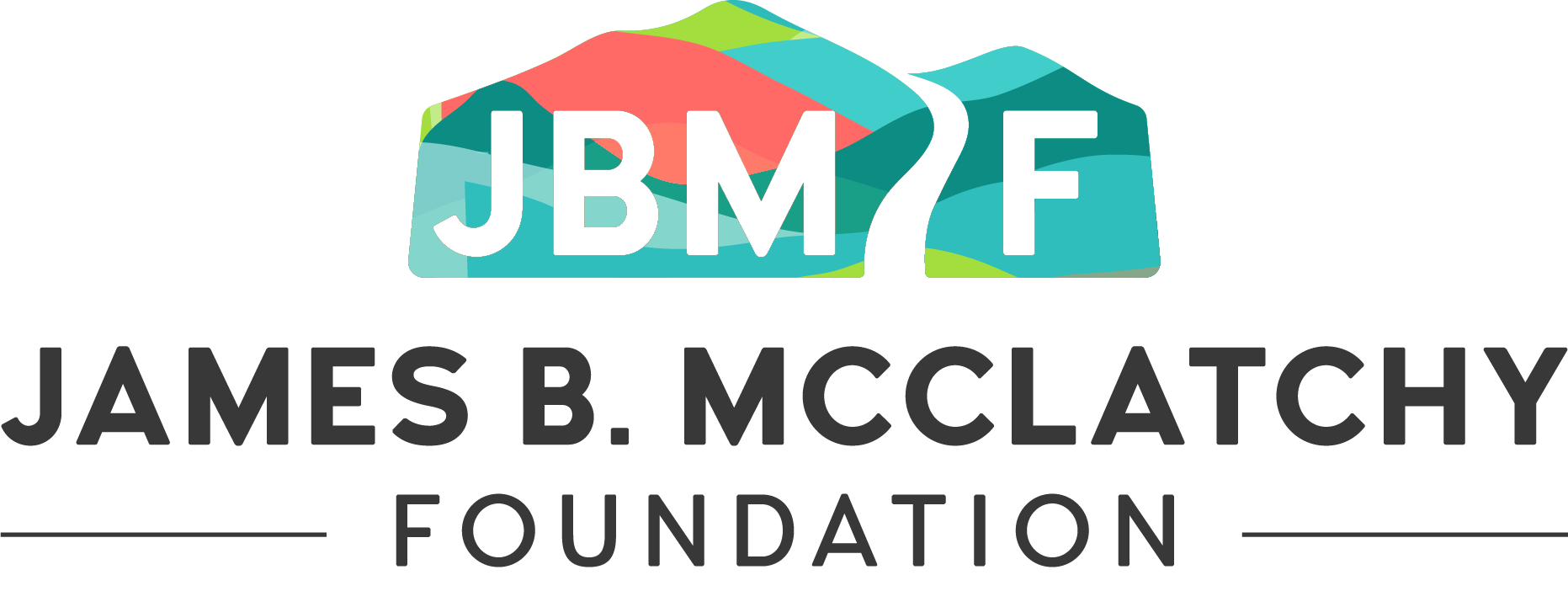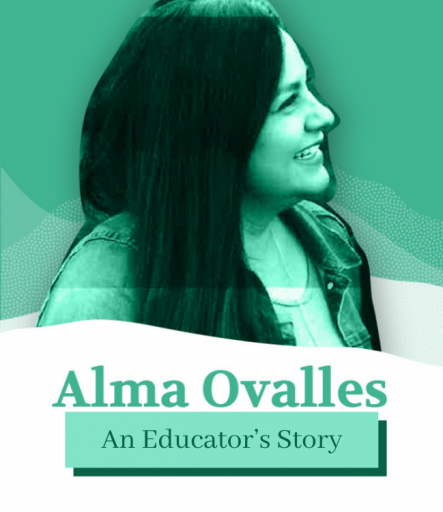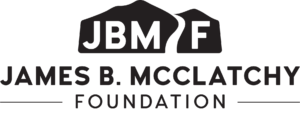Preschool Academic Coach
Firebaugh-Las Deltas School District
There are many families where the parents speak Spanish, but their children begin losing their language. It creates a language barrier within the families. I'm proud of my district for saying we value other cultures, heritage, and diverse languages and that is why dual immersion is being implemented. It’s a win/win for everyone. Our students get to learn in their language while becoming bilingual/biliterate. They can maintain their cultural identity, and gain an appreciation for other cultures. Being bilingual has opened up more doors of opportunity for me. I’ve been thinking about picking up a third language!
An Educator’s Story
A Journey Across Borders, Through Fields, and into the Classroom
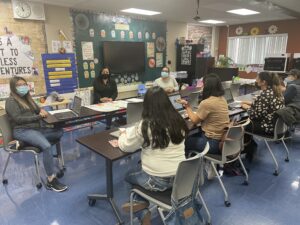 I have been a preschool academic coach for the past four years with the Firebaugh-Las Deltas School District and taught elementary school for 16 years.
I have been a preschool academic coach for the past four years with the Firebaugh-Las Deltas School District and taught elementary school for 16 years.
I’m a first-generation immigrant; born and raised in Mexico. When I was in fifth grade, my parents brought us to California. They had to leave pretty much everything behind, their parents, relatives, friends, home, country and their entire way of living. Although it was a huge sacrifice, they wanted their five children to have better opportunities. I was only 11 years old but I understood the sacrifice my parents made for our family.
I reside in a farm working community and there’s fieldwork as far as the eye can see. Fieldwork means getting up daily at 4 a.m., traveling 1-2 hours to follow the crops in different towns and working in 100+ degree weather.
At 12 years old, I decided to go work in the fields even though it was illegal to allow children that young to work. I wanted to help out my family in any way I could. The work paid cash daily. I worked in the fields just long enough to help pay for my clothing and other necessities.
I had to cover most of my face with a handkerchief and keep my head down so the labor contractor wouldn’t see my young face. If ICE (U.S Immigration and Customs Enforcement) was in the area, people without green cards had to leave. I dreaded those green trucks and the idea of deportation. I didn’t want to live like that for the rest of my life.
My dad would often say to me, “Tienes dos opciones. El fil o la escuela. Escoja.” In English, “You have two choices. You can either continue going to school to get your education, or you can work in the fields with me. Take your pick.”
I graduated high school with every desire to attend college and improve my life.
I got accepted to California State University (CSU) Fresno and went off to school excited about my future. My parents didn’t make that much money as farmworkers, so I was able to get financial aid along with a few scholarships I had acquired in high school.
Not long after, my financial aid and scholarship were taken away because I was undocumented.
I was devastated and felt like the school had pulled the rug from under me. I was already enrolled in classes and didn’t know what to do. Luckily, I found an organization called CAMP – College Assistance Migrant Program- that came to my rescue. They paid my tuition and fees for the first two years of college. I eventually got my green card as a junior in college.
I graduated from college with a dual degree in Liberal Studies and Chicano and Latin American Studies and a minor in Spanish. I obtained the Bilingual Authorization Certificate Programs (BCLAD) certification, which was important to me since such a large percentage of the population spoke Spanish as their first language and I wanted to aid in keeping the language strong.
I became the first person in my family to graduate from college and that was a huge milestone and celebration. Although the road wasn’t easy and was often bumpy, I was motivated by the sacrifices my parents made and that kept me pulling ahead.
I worked in the fields every summer from the time I was 12 to 22. When I signed my teaching contract, I still worked in the fields that summer to make sure I had the necessary funds for bills and to get my classroom ready. When I left the fields in August that year, I began my career in education teaching first graders.
Farm work is strenuous and your body really takes a beating. It was hard work but I never shied away from it. I’ve known struggle, and that gives me more perspective, understanding, and empathy. If I ever find myself complaining about the California heat, I remind myself that I’m lucky because I don’t work under the harsh sun anymore and I’m in an air-conditioned room.
I work to make my parents proud, to show how much I appreciate their sacrifice, and try to help in any possible way. It’s my way of paying them and letting them know that their sacrifices weren’t in vain. I have so much gratitude towards my parents, teachers, and friends- and everyone who helped lead me to this path that I love so much.
Small Town Love, Outsized Impact
When I think of the Central Valley, I think about my parents, and the hundreds of thousands of farmworkers who are feeding America. Their hard-working hands harvest tomatoes, lettuce, asparagus, corn, garlic, cantaloupe, and watermelons that are shipped off to different parts of the country for people’s consumption.
It is back-breaking work, which is why I’m certain parents want better for their children and why investing in education is a priority.
I live in a small town called Firebaugh, a close-knit community of about 8,000 residents. Every July our town hosts the Cantaloupe Roundup, and the whole town comes out to this event. This community is very important to me.
Josh Allen, the beloved Buffalo Bills quarterback, has helped to put Firebaugh on the map. He is talented, kind-hearted and he continuously supports his community. He’s a good role model and I’m grateful for the help he provides to our town.
Fresno is the bigger, more well-known town nearby. Going to college there was the furthest away that I’ve lived since arriving from Mexico. I always knew I would come back and teach in Firebaugh. I am raising my children here and they attend school here while I’m still working for the District.
I wanted to support my community and inspire a future generation to keep going forward, pursue higher education and become kind, generous adults who follow their passions and know how to lend a helping hand.
A Calling
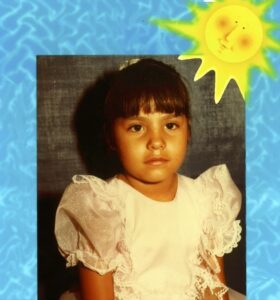 This is my kindergarten graduation photo back when I attended school in Mexico. I was 6 years old. Even in this photo I already knew I was going to be a teacher.
This is my kindergarten graduation photo back when I attended school in Mexico. I was 6 years old. Even in this photo I already knew I was going to be a teacher.
In Mexico, we called our teachers “Professors” and referred to them by their first name. ‘Profesora Carmen’, my kindergarten teacher, was lovely. She was everything a kindergarten teacher should be- compassionate with a never-ending supply of patience for students. I adored her and wanted to be just like her. I still remember when she was absent for two consecutive days and our entire class had to go to a different classroom with a different teacher. I was devastated. When the substitute teacher let us know she was back, those were the best words I had ever heard. I remember running towards her, embracing her and being so thankful that she was back. I remember cutting a [paper] Christmas tree and her being very impressed with my cutting skills and giving me lots of praise for my effort. She had such an impact on me, and that is the same kind of impact I strive to have with students (now teachers) under my care.
New Heights
When my current position became available, I was told that I’d be perfect for the role, but I was initially resistant because I loved my job as a classroom teacher. I remember another coach telling me about the impact that I could have on teachers and students by coaching.
The transition to preschool was not easy because the K-12 world is so much different. I was lucky to have the support of my principal, Mrs. Sanchez, who connected me to the right people in the preschool setting and the preschool teachers who were so patient with me. My ideas about activities for preschoolers had to change because they were more appropriate for kindergarteners. Preschool is hands-on, and there was a lot I had to learn. I am still learning!
Coaching allows me to work collaboratively with teachers to use learning strategies to meet the needs of diverse learners. When we have a class full of children with different learning styles, building on the craft of teaching is important. When we get together and plan, we think about how activities will work for each grade level, how it will impact students at different learning levels, and what modifications are needed to make learning accessible for everyone. Collaboration ends up truly benefiting our students. When teachers feel validated and supported, they are better teachers because they make better-informed decisions.
Setting a Foundation
Every time I walk into one of our teachers’ classrooms, I am reminded of the importance of preschool. Preschool provides foundational and social-emotional skills that help our students to understand and manage their feelings, learn how to share, take turns, and make friends. Without that foundation, gaining academic skills becomes much more of a challenge.
When we read to children, they are doing more than just hearing a story. They are learning to compare and contrast, how to retell, and learning to appreciate literature and understanding of other cultures and the world around them. We’re helping them build their vocabulary, extend their sentences, and foster their imaginative skills.
When our children are enrolled in preschool, it makes their transition into kindergarten even smoother because they’ve been exposed to structure and expectations. As parents, we all want to help our children succeed and preschool can help accomplish that.
Preserving Culture, Prioritizing all Languages
I’m really proud of all my past and present students. About 10 of my former first graders are now either teaching or tutoring in my district! When my children began swimming lessons at the local high school, my former students were their swimming instructors. When I went to get lab work done, one of my former students was a lab technician! One of my current preschoolers always smiles when I tell her that I was her mom’s teacher. That’s a big deal.
I’m also proud of my district for starting the work of dual immersion in our classrooms, beginning with our preschool and hopefully soon, the elementary level. Currently, half of our preschool is involved in dual immersion with the remaining classrooms learning English with Spanish support. We are following a 50/50 model where the instruction one day is in English and another day in Spanish. We are in the beginning stages and still have a long way to go but we are up for the challenge.
There are many families where the parents speak Spanish, but their children begin losing their language. It creates a language barrier within the families. I’m proud of my district for saying we value other cultures, heritage, and diverse languages and that is why dual immersion is being implemented. It’s a win/win for everyone. Our students get to learn in their language while becoming bilingual/biliterate. They can maintain their cultural identity, and gain an appreciation for other cultures. Being bilingual has opened up more doors of opportunity for me. I’ve been thinking about picking up a third language!
Culture, Language, and Identity
I hope that all dual language learners enter a preschool setting and classroom where they feel valued, safe, and nurtured, where students feel welcome and aren’t afraid to be themselves. We have to work hard to really drive that message home and be intentional about creating inclusive classrooms where they can see themselves reflected in the literature, images, and materials.
My community is predominantly Mexican and the primary language is Spanish. In the past, we would have our little ones come to school and be immersed in English while ignoring the home language. That can send the wrong message. And oftentimes, when that happens, the home language is lost, and so is their value and sense of identity.
They need to hear teachers speaking their language so they feel pride, and continue to build on that. All of this contributes to helping them build confidence and a positive self-image. Our message needs to be, “Your language, your heritage, and your culture is an asset. We respect you.” We need to make that message loud and clear.
Thank you for listening to this educator’s story.
Published on the James B. McClatchy Foundation website using the Creative Commons License https://creativecommons.org/licenses/by-nc-nd/4.0/ : Attribution-NonCommercial-NoDerivatives 4.0 International (CC BY-NC-ND 4.0)
